Hawks in Colorado
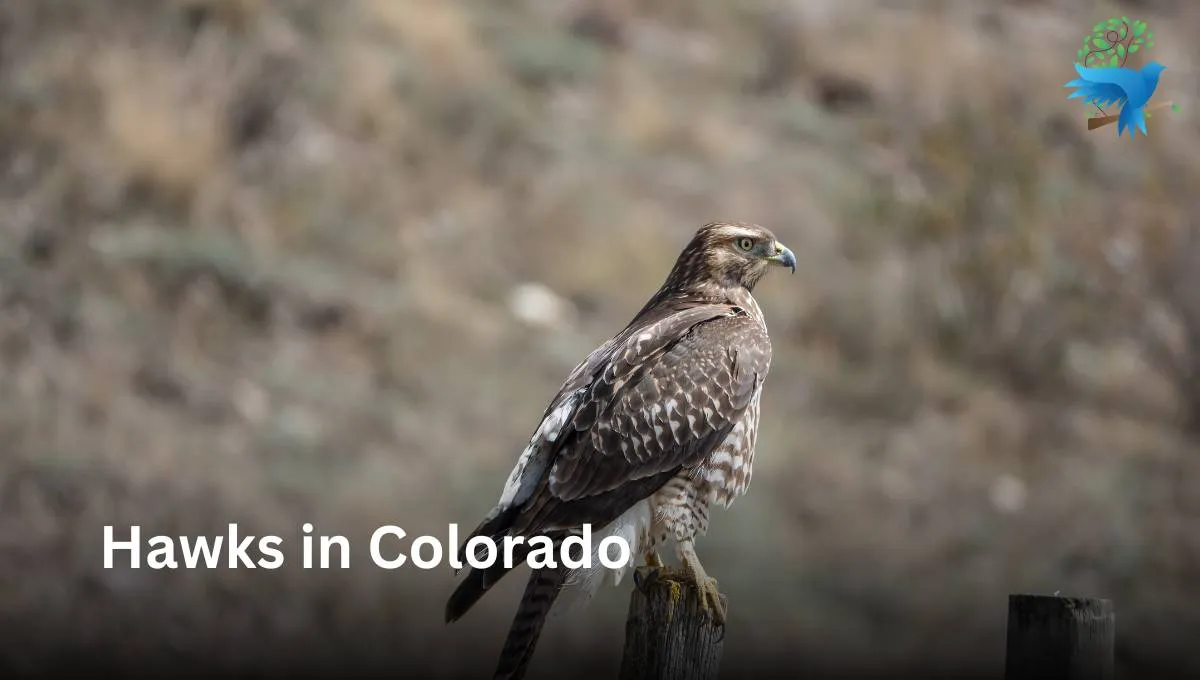
Colorado is a beautiful state with fantastic birding. This lovely state is also home to many hawks!
From the vast grassland of the eastern plains to the rugged peaks of the Rocky Mountains, Colorado provides a rich tapestry of environments that support a wide range of hawk species.
Over 270 species of hawks across the world and in Colorado nine species of hawks can be spotted. Some remain all year and some are seen in breeding seasons or summer seasons.
So, read this article to learn about the hawks of Colorado and how to identify them as well as their feeding habit.
List of hawks in Colorado:
- Red-tailed hawk
- Rough-legged hawk
- Copper’s hawk
- Swainson’s hawk
- Sharp-shinned hawk
- Ferruginous hawk
- Northern Harrier
- Osprey
- Broad-winged hawk
1. Red-tailed hawk (Buteo jamaicensis)
The red-tailed hawk is a large hawk and is the second-largest Buteo hawk in North America, after the Ferruginous hawk.
The majority of Red-tailed hawks are rich brown above and pale below, with a streaked belly and, on the wing underside, a dark bar between shoulder and wrist.
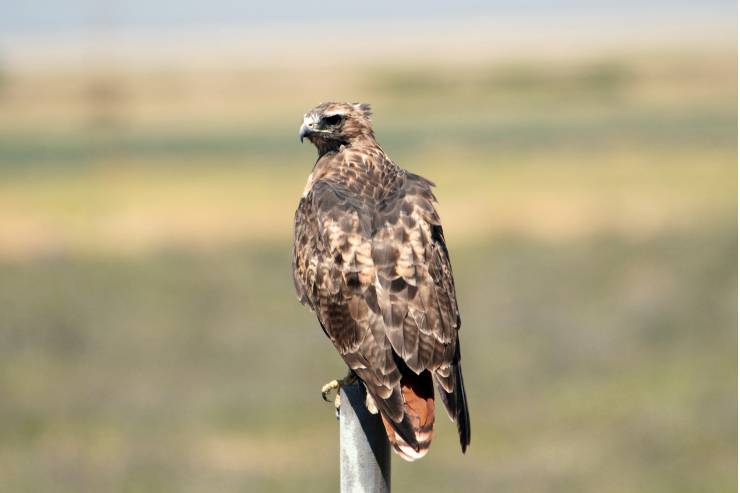
Its tail is usually pale below and cinnamon red above, while in young birds it’s brown and banded.
Size and wingspan of Red-tailed hawk:
- Size: 45-65 cm (18–26 inches)
- Weight: 690-1600g (1.5-3.5 lb)
- Wingspan: 110-141 cm (3 feet 7 inches-4 feet 8 inches)
- Life span: 10–15 years
Habitat: It is the most common one in all of North America. Also, they have a year-round range in the entire state of Colorado and can commonly be seen soaring overhead or perched high up on telephone wires and high in trees.
Its habitats may include everything from woodland with scattered clearings to open grassland or desert with few trees or utility poles.
Feeding: The red-tailed hawks feed on a wide variety of prey. Mammals commonly make up a large part of their diet, and include everything from small mice to rabbits and hares.
These hawks also take medium-sized birds and reptiles such as snakes and lizards.
2. Rough-legged hawk (Buteo lagopus)
The rough-legged hawk, which is also called rough-legged buzzard, is a medium-large bird of prey. Also, it belongs to the genus Buteo.
These species are boldly patterned, dark-brown hawks with tails that are dark at the tip and pale at the base. Like other hawks, they occur in light and dark morphs.
Likewise, light morphs have pale underwings with dark patches at the bend of the wing. Female Rough-legged hawks have pale heads and dark belly patches, while on males the pattern is similar but more mottled.
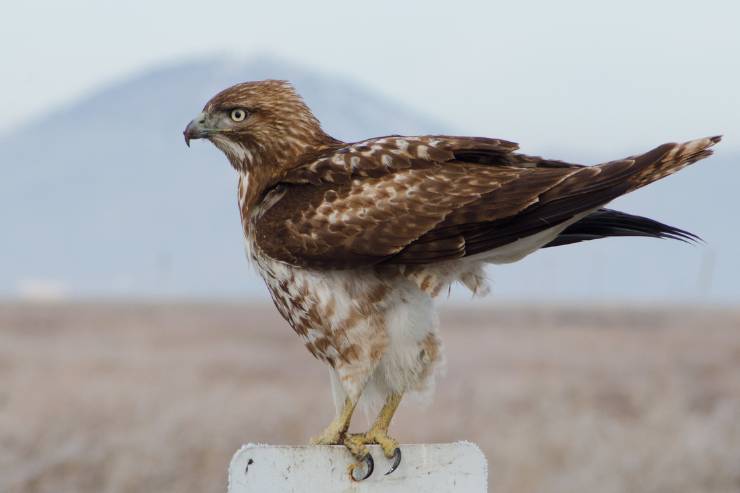
Dark morphs are mostly dark brown but usually show pale trailing edges to the underwing.
Size and wingspan of Rough-legged hawk:
- Size: 47-52 cm (18.5-20.5 inches)
- Weight: 715-1400g (25.2-49.4 oz)
- Wingspan: 132-138 cm (52.0-54.3 inches)
- Life span: Up to 15 years
Habitat: It can be seen across Colorado, but only during the non-breeding season. The rough-legged hawks breed in the Arctic.
During winter, they migrate to open habitats such as prairies, fields, airports, and deserts in the US and southern Canada.
Feeding: In the breeding season, they feed primarily on small rodents such as lemmings and voles.
Whereas during winter, it eats small mammals including shrews, mice, and voles.
Read More: Hawks In Georgia >>>>
3. Copper’s hawk (Accipiter cooperii)
The copper’s hawk is a member of the genus Accipiter. It is a medium-sized hawk with the classic acciptier shape.
It has broad, rounded wings and a very long tail. Also, in Copper’s hawks, the head frequently appears large, the shoulders broad, and the tail rounded.
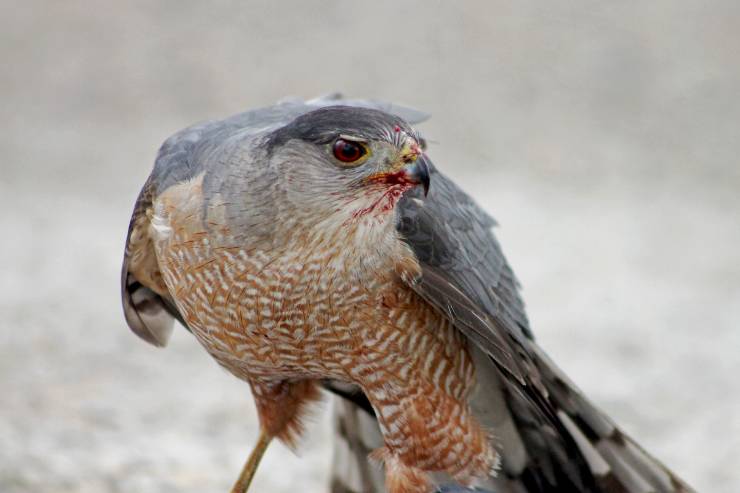
Talking about their color pattern, the copper’s hawk adults are steely blue-gray above with warm reddish bars on the underparts and thick dark barks on the tail.
Likewise, Juveniles are brown above and crisply streaked with brown on the upper breast. This bird is larger than a Sharp-shinned hawk and about crow-sized, but males can be much smaller.
Size and wingspan of Copper’s hawk:
- Size: 37-39 cm (14.6-15.3 inches)
- Weight: 220-410g (7.8-14.5 oz)
- Wingspan: 62-90 cm(24.2-35.4 inches)
- Life span: 12 years
Habitat: The medium-sized hawk is native to the Northern American continent and found from southern Canada to Mexico. Also, it can be found all year long throughout the state of Colorado.
These birds tend to occur in various types of temperate deciduous forests and mixed forests. Also, they are adaptable in all seasons to forested mountainous regions, especially foothills.
Feeding: It feeds mostly on medium-sized birds, in the size range of robins jays, and flickers, but also on larger and smaller birds. It also consumes many small mammals such as tree squirrels, mice, and bats. Rarely eats reptiles and insects.
4. Swainson’s hawk (Buteo swainsoni)
The swainson’s hawk is a large bird species in the family Accipitridae. Also, it is colloquially known as the Grasshopper hawk or Locust hawk.
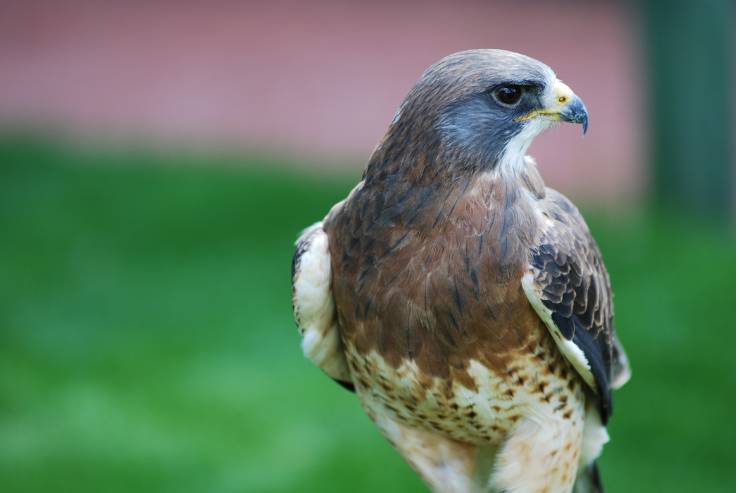
Swainson’s hawk exists in two main color variations: a light morph and a dark morph. A light morph adults are white on the underparts with a dark, reddish”bib” on the chest and a noticeable white throat and face patch.
Whereas, dark-morph birds are dark brown except for a light patch under the tail. Likewise, there is a rufous variant that is lighter on the underparts with reddish bars.
Size and wingspan of Swainson’s hawk:
- Size: 46-56 cm (18–22 inches)
- Weight: 650-1100g (22.92-38.80 oz)
- Wingspan: 119-150 cm (47–59 inches)
- Life span: Up to 15 years
Habitat: The Swainson hawks are the second most frequently spotted hawks during summer in Colorado. It arrives in the state in April to breed, and then migrate at the beginning of September.
It inhabits savannas, grasslands, shrublands, and prairies. They favor wild prairies, hayfields, and pastures over wheat fields and alfalfa fields, which may offer the prey too much cover.
In several states like California, this bird is listed as a threatened species.
Feeding: Its diet is mostly insects and mammals. Insects prey such as crickets, grasshoppers, and locusts. Although breeding birds rely heavily upon small mammals, small birds and other vertebrates like reptiles and amphibians.
5. Sharp-shinned hawk (Accipiter striatus)
The sharp-shinned hawk is a small Accipiter hawk, in the family Accipitridae. It is often known as the northern sharp-shinned hawk and a sharpie.
The sharp-shinned hawk adults are salty blue-gray above, with narrow, horizontal red-orange bars on the breast. While immature birds are mostly brown, with coarse vertical streaks on white underparts.
Both adults and young have broad dark bands across their long tails. Also, the females are one-third larger than males, approaching the size of a male Cooper’s hawk.
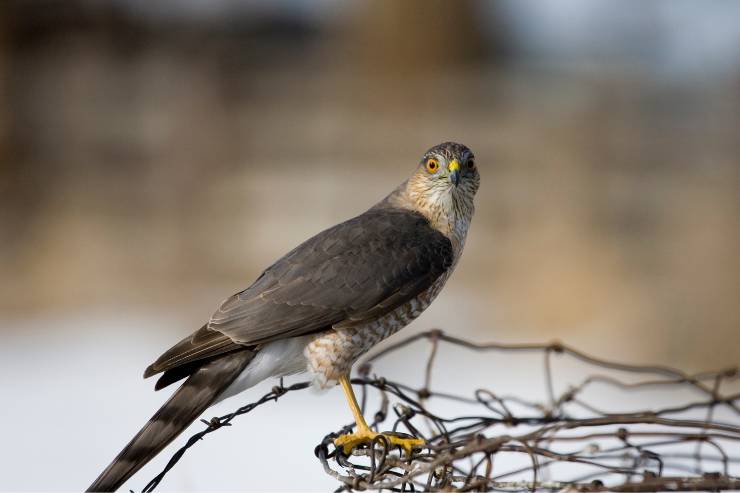
Size and wingspan of Sharp-shinned hawk:
- Size: 24-34 cm (9.4-13.4 inches)
- Weight: 87-218 g (3.1-7.7 oz)
- Wingspan: 43-56 cm (16.9-22.1 inches)
- Life span: 5 years
Habitat: It is widespread in North America, Central America, Southern America, and the Greater Antilles. Also, it is common in Colorado in forested areas.
These raptors live in a wide range of woodland and forest types, both dominated by conifers and by various types of broad-leaves trees (especially oaks).
Feeding: The sharp-shinned hawks mainly eat small birds, especially various songbirds such as wood warblers, sparrows, nuthatches, and finches.
Infrequently, they also consume rodents, frogs, lizards, large insects, and sometimes bats.
6. Ferruginous hawk (Buteo regalis)
The Ferruginous hawk, scientifically known as Buteo regalis, belongs to the broad-winged buteo hawks. An old informal name for this majestic bird is Ferrugineous rough-leg, due to its similarity to the closely related Rough-legged hawk.
These are large Buteo hawks with relatively long wings and large heads. Also, the wings narrow to form more pointed tips than is typical for other buteos.
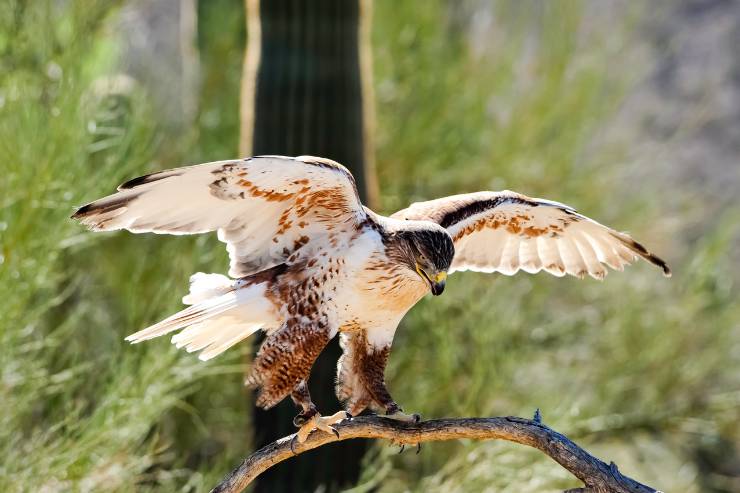
Speaking about their color pattern, there are two color forms. Light-morph hawks have strikingly white underparts and rusty legs that form a V when the bird is soaring. Also, they have rusty upperparts with a pale head.
While rarer dark-morph birds are mainly a deep rufous-chocolate.
Size and wingspan of Ferruginous hawk:
- Size: 56-69 cm (22.1-27.2 inches)
- Weight: 977-2074 g (34.5-73.2 oz)
- Wingspan: 139 cm (4 feet 7 inches)
- Life span: Up to 20 years
Habitat: They are found year-round throughout much of Colorado, but many may tend to move out from the center of the state in the summer.
In addition, it occurs in the western and central parts of North America. Their range stretches from southern Canada to the southern USA and northern Mexico.
The ferruginous hawk preferred habitat includes arid and semiarid grassland regions, prairies, steppe, plateaus, agricultural land rolling hills of grassland, and desert edges.
Feeding: They are carnivorous, eating ground squirrels, birds, mice jackrabbits, reptiles, and amphibians. Rarely, they will eat snakes, meadowlarks, grasshoppers, crickets, and lizards.
7. Northern harrier (Circus hudsonius)
The northern harrier, commonly known as the marsh hawk or ring-tailed hawk, is a bird of prey. It is now placed in the genus Circus, introduced by the French naturalist Bernard Germain de Lacepede in 1799.
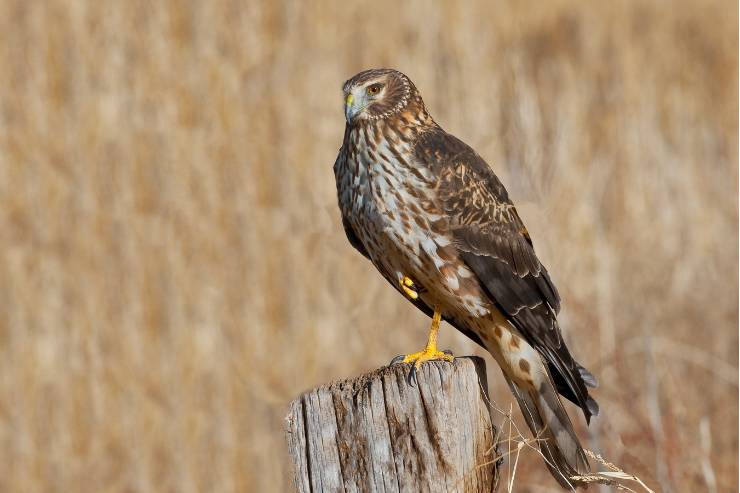
They are slender, medium-sized raptors with long, fairly broad wings and a long, rounded tail. It has a flat, owl-like face and a small, sharply hooked bill.
The northern harrier often fly with their wings held in a dihedral, or V-shape, above the horizontal. Regarding color pattern, male plumage is darker grey than that of the female harrier, and the female is also darker and more rufous.
Additionally, it is smaller than a Red-tailed hawk and larger than a Sharp-shinned hawk.
Size and wingspan of Northern harrier:
- Size: 41-52 cm (16–20 inches)
- Weight of male: 290-400 g (10-14oz)
- Weight of female: 390-750g(14-26oz)
- Wingspan: 97-122 cm (38–48 inches)
- Life span: Up to 12 years
Habitat: The northern harrier is the only harrier variety of hawks indigenous to North America. Its breeding grounds range as far north as Canada but in winters in more southern climates.
This bird is found throughout Colorado year-round. It inhabits marshes, bogs, moorland, farmland coastal prairies, grasslands, and other assorted open areas.
Feeding: Their diet mainly consists of small mammals. They prefer voles, cotton rats, and ground squirrels. Up to 95% of their diet comprises small mammals.
Also, it usually hunts birds such as larks, sparrows, small shorebirds, and the young of waterfowl and galliforms.
Occasionally, it supplements their diet with amphibians, particularly frogs as well as bats if they are available.
8. Osprey (Pandion haliaetus)
Osprey is a diurnal, fish-eating bird of prey with a cosmopolitan range. It is also recognized as sea hawk, river hawk, and fish hawk.
They have a unique appearance with dark-brown upperparts and white underparts. It can easily be recognized in flight by their mottled wings, and five long wingtip feathers.

Also, the underside of their wings shows a white and gray-brown color pattern. The osprey head is mostly white, with wide dark-brown stripes that run from the base of the bill through the eye.
Size and wingspan of Osprey:
- Size: 54-58 cm (21.3-22.8 inches)
- Weight: 1400-2000g (49.4-70.5 oz)
- Wingspan: 150-180 cm (59.1-70.9 inches)
- Life span: 15–20 years
Habitat: Ospreys are found in temperate and tropical habitats across every continent on earth, except Antarctica. They nest in any location near a body of water, providing an adequate food supply.
However, in South America, it occurs only as a non-breeding migrant. Also, they can be found near rivers, reservoirs, oceans, coastal wetlands, swamps, mangroves, and marshes.
Feeding: These birds are piscivores and fish make up 99% of their diet. Sometimes, they may prey on rodents, hares, rabbits, other birds, and small reptiles.
9. Broad-winged hawk (Buteo platypterus)
Broad-winged hawk is a small to medium-sized bird of prey with broad, rounded wings and a relatively short, banded tail.
Also, it has a dark brown back and wings, with a rufous-barred underbelly. As in most raptors, females are slightly larger than males.
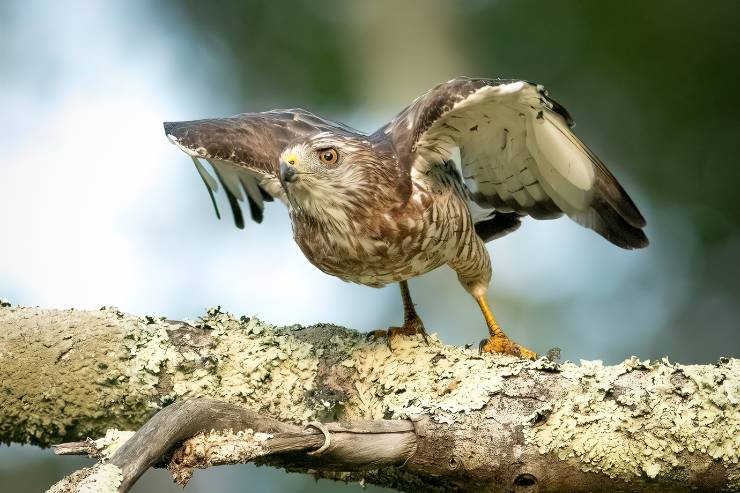
Size and wingspan of Broad-winged hawk:
- Size: 32-44 cm (13–17 inches)
- Weight: 265-560 g (9.3-19.8 oz)
- Wingspan: 74-100 cm (29–39 inches)
- Life span: 12 years
Habitat: This species is found in Colorado, but it is less common than other species. They are most commonly seen during migration seasons, often forming large flocks.
Also, Broad-winged hawks have a wide range in North America and South America, from southern Canada to southern Brazil. However, the population is declining in some parts of its breeding range because of forest fragmentation.
Feeding: They have a hunting strategy that involves waiting on a perch and swooping down on prey. They have a varied diet and may consume different types of food from season to season.
During summer or nestling season, these birds primarily eat small mammals such as chipmunks, voles, and shrews. It also consumes frogs, lizards, and sometimes even other nesting birds.
Whereas in the winter, they feed on insects, crabs, and some mammals.
Conclusion
Colorado diverse landscapes provide a rich habitat for a variety of hawk species.
From the Swainson hawk to the Ferruginous hawk, each species brings its own unique characteristics and behaviors to the state ecosystem.
Their presence contributes significantly to the biodiversity of Colorado, making it a haven for birdwatchers and nature enthusiasts alike.
Remember, always keep your eyes open. You never know when you’ll spot a flash of hawks flying by.






